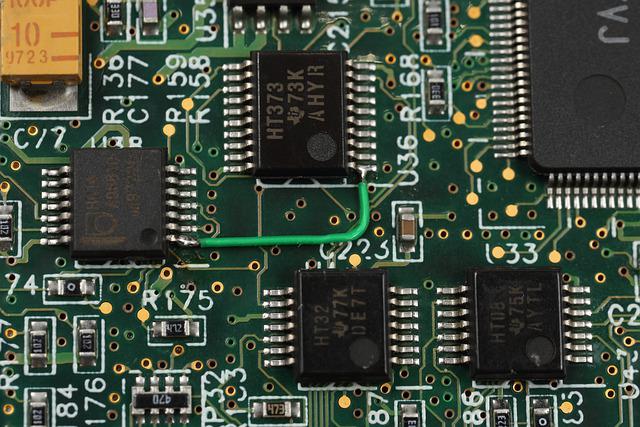MCCP and TBBPA are candidates in addition to the ten substances already regulated per European Union (EU) RoHS, also referred as RoHS 4.
This proposal follows a 2021 investigation by the Oeko-Institute (or Öko-Institut), a private environmental research organization, on the safety of seven chemicals. Among those studied, they only proposed that MCCPs and TBBPA become restricted. Namely, they suggest a limit of 0.1% per weight for each substance in a homogeneous material. For TBBPA, the restriction only applies to usage in additive flame retardants.
Let’s discover these two chemicals.
The first proposed substance is not a single chemical. MCCPs, or medium-chain chlorinated paraffins, are a group of hydrocarbons with varying chain lengths and levels of chlorination. The Oeko-Institute report studied molecules with carbon chains between 14 and 17 carbons as described by CAS number 85535-85-9. Despite having a reference number, MCCPs are hard to categorize or isolate due to their different compositions. Therefore, the Oeko-Institute recommends assigning a definition that specifies the MCCP chain length and chlorination level per weight to avoid confusion.



The primary use of MCCPs is as a secondary plasticizer in PVC. In other words, they make primary orthophthalates plasticizers more effective by increasing flexibility. The sheathing and insulation of cables rely on this property.
They can, in a few cases, serve as flame retardants. They are a good choice of coating or adhesive in polymers like PVC, rubber and paints.
MCCP is a popular substance because it is a safer alternative to short-chain chlorinated paraffin (SCCP). Indeed, both REACH SVHC and Persistent Organic Pollutant (POP) regulations manage SCCP. MCCPs are typically mixed with SCCPs. If your product is EU POP compliant, it should contain neither SCCPs nor MCCPs.
The toxicity to aquatic environments and bioaccumulative properties of MCCPs are a threat.
In addition, workers in the waste disposal process put their health at risk. For example, during the shredding of cables, MCCPs released into the air could damage the worker’s respiratory system.
Let’s move on to the second substance.

Unlike MCCPs, TBBPA is easy to define. It stands for tetrabromobisphenol-A with a molecular formula of C15H12Br4O2. Its CAS number is 79-94-7. TBBPA is a brominated version of the REACH-SVHC regulated molecule BPA (bisphenol-A). In fact, under certain conditions, TBBPA can decompose into BPA.

TBBPA can be found in printed wiring boards (PWB) in flame-retarded epoxy resins. The molecule is a reactant in the chemical formation of the resin. During polymerization, TBBPA forms strong bonds that make it unlikely to be released from the polymer during waste disposal.
However, its less common use is more concerning. Notably, TBBPA is in ABS brominated flame retardants. In that case, it is an additive flame retardant. It forms weaker bonds with the plastic polymer. Therefore, it is more likely to be released from the substance.


If TBBPA escapes intact from its polymer during waste disposal, it poses health risks to the workers. Additive flame retardants have a higher chance of releasing TBBPA.
Like MCCPs, TBBPA is toxic to aquatic environments

Substance Name | Concentration Limit | Usage | Concerns |
|---|---|---|---|
Medium-chain chlorinated paraffin (MCCP) | < 0.1% or 1000 ppm |
|
|
Tetrabromobisphenol-A (TBBPA) | < 0.1% or 1000 ppm | Additive flame retardant in ABS | Same as above |
Here is a refresher on EU RoHS. RoHS (Restriction of Hazardous Substances) is a list of chemicals that must remain below a certain threshold. The list initially included six substances. In 2015, RoHS 3 introduced four new phthalates. With the addition of MCCPs and TBBPA, RoHS covers the following 12 substances:

To fully comply with EU RoHS, manufacturers of electronics must:
If you would like to learn more about RoHS, contact Enviropass.